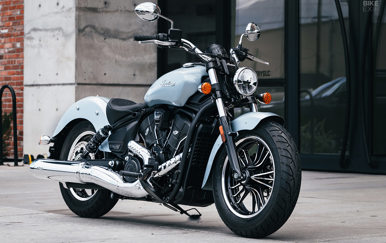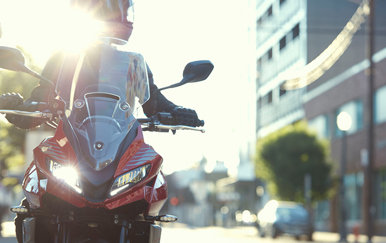The popular Street Twin is Triumph’s entry-level modern-classic Bonneville, but its spec gives a far more premium feel that the ‘entry-level’ tag makes out. Updated in recent times with improved performance, comfort and retaining those gorgeous vintage Bonneville looks, the Street Twin is a retro motorcycle aimed at new riders and veterans alike, but what is this latest update like to ride?
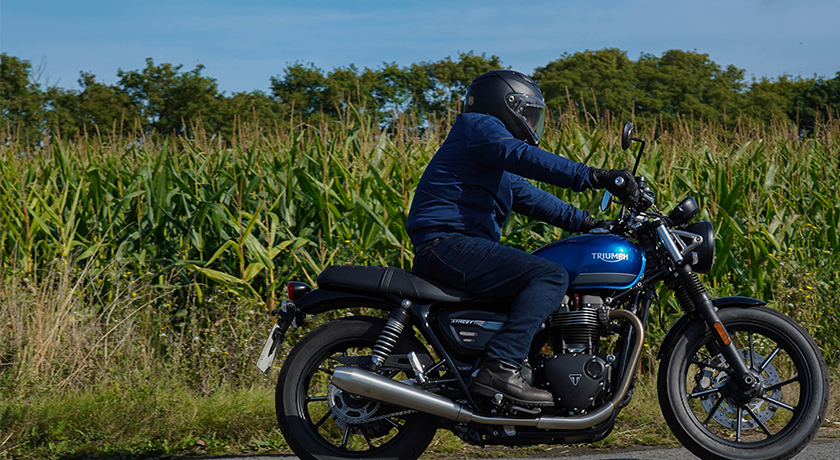
Styling and Design
The Street twin remains an absolute head turner, rocking the true Bonneville styling. Its vintage styling mixed in with a little modern works perfectly for me.
With the short front mudguard, cartridge forks, circular halogen headlight, indented fuel tank, bench seat, brushed metal work including the twin stainless steel exhaust, the looks continue to work so well even to this day and literally everyone who saw it complimented it highly.
The attention to detail and finish is great on the Street Twin, with Triumph and Bonneville logos placed throughout but in a classy way – from in the headlight and dash to the rear of the seat. Mix in the aforementioned brushed metalwork including the headlight mounts, it gives such a great finish to this entry-level bonnie.
Available in three colourways: Jet Black (£8,400), Matt Ironstone (£8,600) and the version we had on test the stunning Cobalt Blue (£8,600).
All in all, for looks it is a massive thumbs up from me.
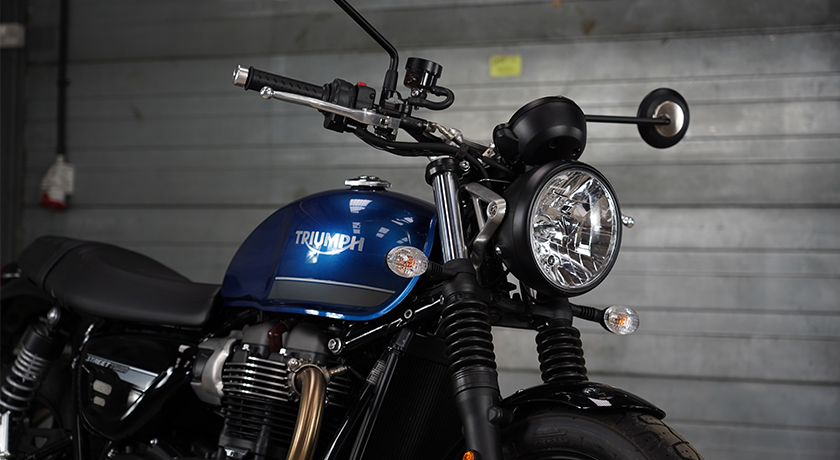
Engine
The Street Twin is all about torque!
Powered by a 900cc, liquid-cooled, 8-valve, 270° crank angle parallel-twin, which even has HT (High Torque) on the engine nameplate, the Street Twin puts out a respectable 64.1hp at 7,500rpm.
The throttle is also very friendly too, yet the torque won’t fail to put a smile on your face, it is fantastic fun! With the torque kicking in at 3,800rpm and the gearing really well-spaced it allows great use of the gears to build up speed and have fun. The 5-speed gearbox truly helps define the Street Twins’ torquey characteristics, allowing you to gently coast in gears or use them to their full potential, especially when the moment takes you or you want a quick overtake.
You can rest assured that the 900cc parallel-twin sounds absolutely fantastic, hearing it thumping away as it idles, pull that throttle back and it starts to roar away, and those twin stainless steel upswept exhausts compliment it well – the overall sound is great!
Triumph Street Twin Top Speed
The Triumph Street Twin can reach top speeds of up to 110mph.

Fuel Tank and MPG
That vintage-styled fuel tank holds 12 litres, and you should expect consumption to be somewhere around 60-70 miles per gallon, which I think is pretty good going for a classic-style machine such as this with a 900cc engine.
Using that full 12-litre tank will see a range of around 170 miles.
Brakes and Suspension
Brakes are also well catered for on the Street Twin. At the front is a large single 310mm disc, with a four-piston Brembo brake caliper, heading to the back and there is a 255mm brake disc with a two-piston Nissin brake caliper. Now the braking is sharp and progressive on the front and the back brake is more gentle, used both in conjunction and the standard braking on the Street Twin is really nice and effective.
Onto suspension and at the front we have those vintage looking 41mm cartridge forks, and to the rear, there are twin shock absorbers (pre-load adjustable). The suspension setup is kind of Goldilocks style – not too firm, not too soft and it just works well and handles everyday roads very well, making every day riding an absolute breeze!
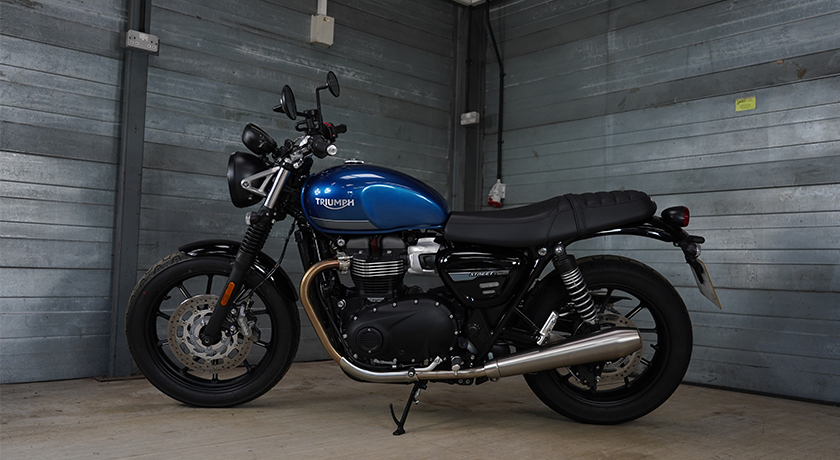
Technology, Dash and Switchgear
The perfect merge of modern and classic continues with the dash and switchgear. Staying with a traditional circular dash which is split between the large analogue speedometer at the top and the smaller LCD panel below with dash warning lights between the two.
That LCD panel has all the other vital information, it is not the biggest display in the world, but the information is easy to see and not crammed in either. There is an ‘i’ button on the left of the switchgear which allows you to navigate through the display options. The LCD dash displays fuel gauge, gear indicator, clock, odometer, trip, rev gauge and fuel consumption so I think most people will be pleased.
At the very bottom of the digital display are your riding modes, and it is done nice and simply on the Street Twin – there are two options ‘Road’ and ‘Rain’. ‘Road’ will be the go to for most, but if you want things a bit more reserved and cautious then knock it into ‘Rain’ (by the mode button on the left of the switchgear) for increased traction control and reduced throttle response.
The Street Twin doesn’t stop there it actually packs quite a bit of other tech too; these include ride-by-wire throttle, torque-assist clutch, under-seat USB port, immobiliser key fob, traction control and of course the mandatory ABS.
The switchgear is simple and as you’d expect with everything all very nicely laid out, quality to the touch and working nicely. The indicator is a typical push-in to cancel, and the electric start is adapted into the kill switch where you simply push it down while holding the clutch in.
If you have the bike running in gear and put the side stand down the engine will cut out, so make sure to put it in neutral to save the engine cutting out.
Now if all this standard spec isn’t quite enough for you then as is typical with most Triumph models you are well catered for with accessories, as there are over 120 available.

Seat Height and Riding Position
Looking stunning in its Cobalt Blue colourway and Bonneville goodness, I was absolutely buzzing to get riding! Sitting on the bike before leaving base, I was instantly loving the comfort!
With a very accessible 765mm seat height, padded bench-style seat, and that lovely neutral seating position, the Street Twin is a very comfy and rider-friendly motorcycle – one you can cover a lot of miles on and feel fine for doing so. The only drawback on the comfort side is the obvious lack of protection from the elements and wind buffering, being the naked style classic motorcycle that it is.
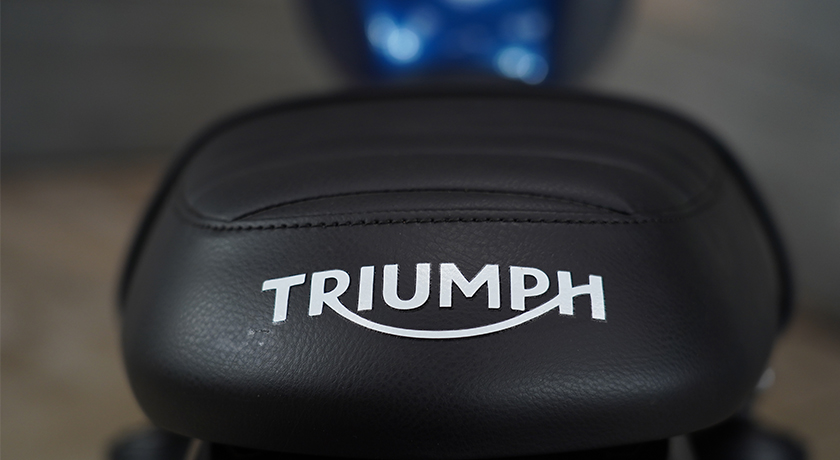
Weight
Weighing in at a modern-classic average 216kg (wet), the Triumph handles superbly, far better than you’d expect from a motorcycle such as this. Manoeuvrability-wise, whether road riding or manual handling it is done with ease.
Hitting the B-roads and country lanes, I was instantly surprised – the Street Twin can handle it! It can handle really blimming well!
Wheels and Tyres
Down to the wheels and the Street Twin has an 18” at the front which has a 100-wide tyre, and at the rear, there is a 17” wheel which has a 150 tyre. The wheels themselves are cast, however, the spokes have machined detailing to add that little extra sign of quality. The tyres on the Street Twin are Pirelli Phantoms which on test were absolutely great and I cannot criticise them at all.
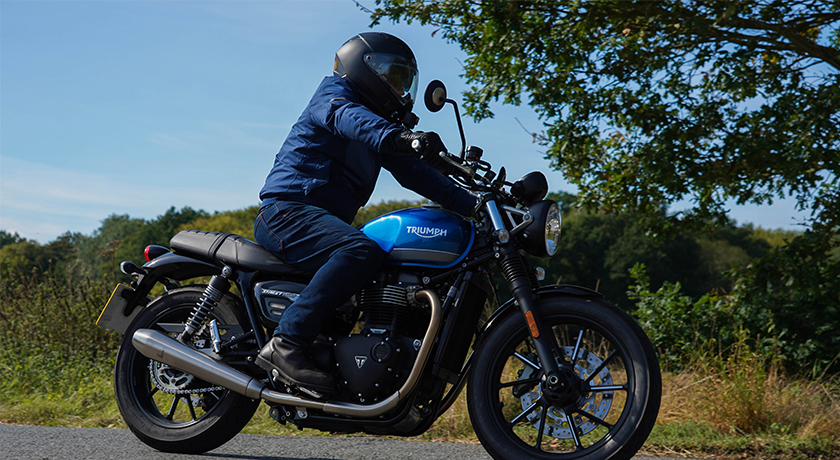
Triumph Street Twin Price
The Triumph Trident starts at £8,400 for the jet-black colourway, want to get the nicer ironstone or even better Cobalt Blue? Well, that can be yours for an extra £200 at £8,600.
Oh and another great thing; the service intervals on the Street Twin are every 10,000 miles!
Final Thoughts on the Triumph Street Twin
When riding the Street Twin, it is hard work to find areas to improve when you look at it for what it is. The two little niggles I did come up with are, firstly, the 12-litre fuel tank gives a range of around 170miles now that’s not terrible, but it would be great to have a slightly larger fuel tank, maybe 14 litres, just to give that little extra range.
Secondly, and I feel bad for saying it (and I will give my full opinion), is the fact that some people will want to see full LED lighting. Now for me, seeing the Street Twin running, with the golden yellow glow emitting from the halogen headlight, makes me think ‘yup this looks like a proper Bonnie!’ So having the halogen works really well and doesn’t bother me. However, there will no doubt be some who’d want to see LED throughout.
Onto the good bits and my oh my, have I been impressed with the Street Twin – it really is a great all-arounder for newbies and old-school bikers alike. It is lovely and comfortable, from the low seat height, decent suspension set-up, wide bars, and relaxed sitting position, it is a bike you could ride for hours and hours and love every second!
The handling for me is another factor that really stands out. For a modern classic such as this to handle the way it does is a great achievement, it is so easy to ride, and it goes exactly where you want it to on bends.
The Street Twin is designed to be an extremely rider-friendly entry-level classically-styled machine with decent spec and it most definitely delivers!
I know this is the entry-level Bonnie for a fact, but for me, the ‘entry-level’ tag is hard on a bike that offers so much.
Pros:
- Lovely, classic-looking motorbike
- Sounds amazing on the road
- Manouvers fantastically
Cons:
- Tyres could be a bit better
- Seat can be uncomfortable on a longer rides
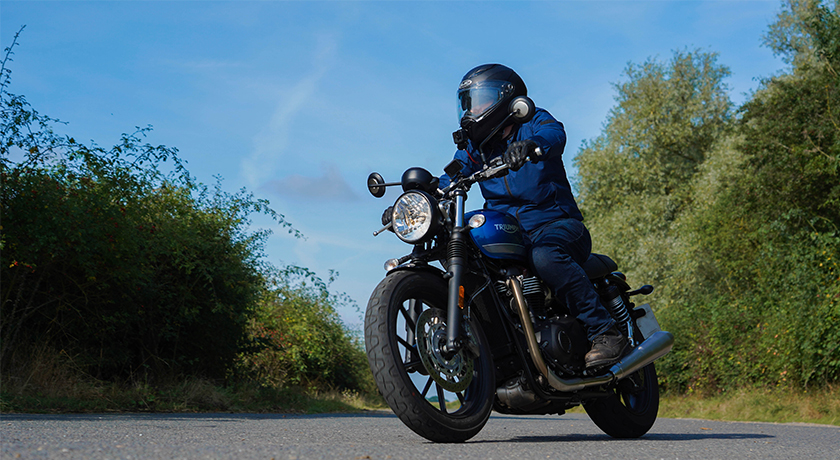
The Last Stop!
So there you have it! I hope you have enjoyed my full road test review of the Triumph Street Twin (2021-onwards)...
Lastly, if you have your very own Triumph Street Twin, or perhaps another motorcycle you need to insure - make sure to get a motorcycle insurance quote direct with Lexham!
Triumph Street Twin Specification (2021-onwards)
| Engine | 900cc, 64.1 bhp, liquid-cooled, 8-valve, 270° crank angle parallel-twin |
| Fuel tank | 12L |
| Brakes | Front: Single Ø310mm floating disc, Brembo 4 piston fixed axial caliper, ABS Rear: Single Ø255mm disc, Nissin 2 piston floating caliper, ABS |
| Suspension | Front: Ø 41mm cartridge forks Rear: Twin RSUs with preload adjustment |
| Seat height | 765mm |
| Weight | 216kg |
| Price | Jet Black (£8,400), Matt Ironstone (£8,600) & Cobalt Blue (£8,600) |
Related article
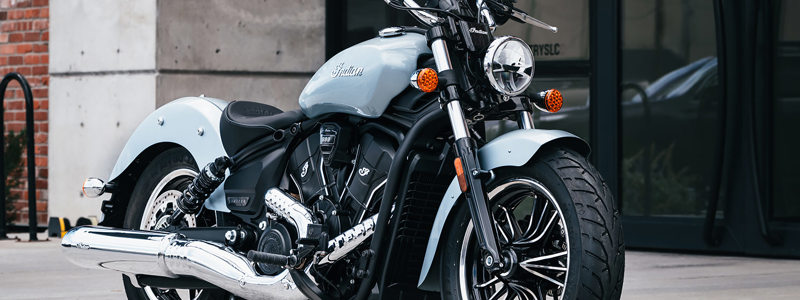
Top 10 Retro A2 Motorcycles for 2025
They’re stylish, they’re timeless and they’re new-rider friendly. What more could you want from an A2 retro motorcycle? How...
Read more


